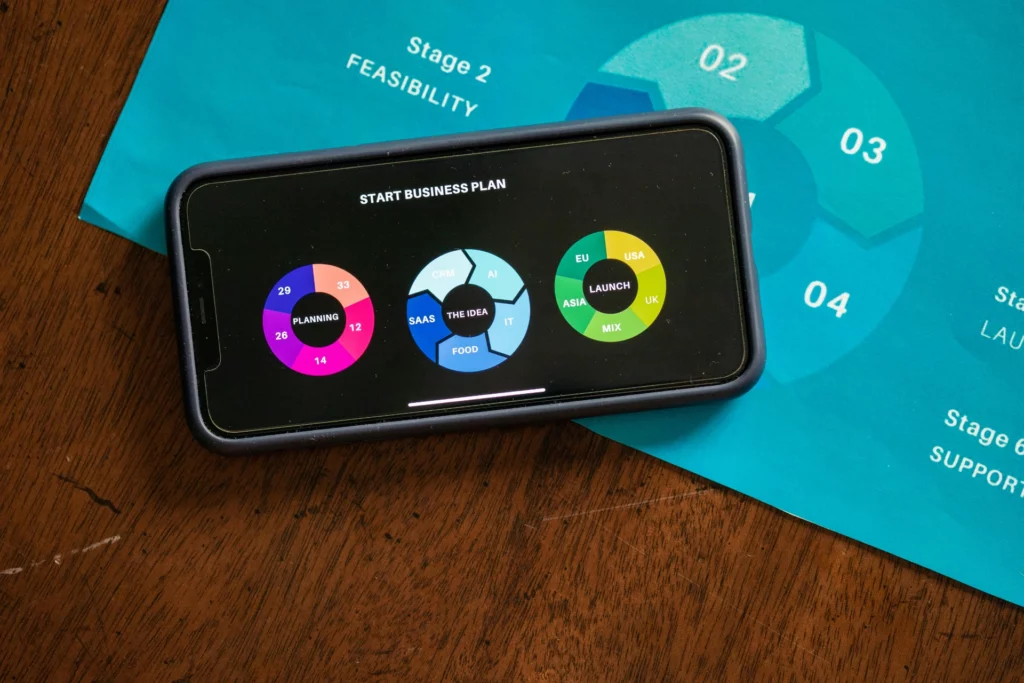Creating a profitable SaaS has become the main objective for many entrepreneurs, startups, and freelancers aiming to make their mark in the Software as a Service world. SaaS platforms dominate the software market and offer exceptional opportunities for those who can combine innovation, user experience, and a successful business model. However, launching such a project is no improvisation: building a high-potential SaaS requires much more than just an idea.
In an ecosystem where SaaS applications multiply and users become increasingly demanding, success relies on three essential pillars: offering features that meet specific needs, designing an intuitive and attractive interface, and adopting a pricing strategy that maximizes recurring revenue while appealing to prospects. Whether you want to launch a B2B SaaS, a management SaaS, or an innovative solution to automate complex tasks, every detail counts to turn your MVP into a viable and scalable SaaS product.
A Complete Guide to Building a SaaS That Attracts Customers and Ensures Long-Term Success
This comprehensive guide will walk you through creating a SaaS capable of attracting your first clients, optimizing customer relationships, and propelling your project toward long-term success. You will learn how to define essential features, build an effective prototype, protect intellectual property, and build a SaaS platform ready to face growth phases.

Identifying a High-Potential SaaS Idea
Before diving into development, it is crucial to choose a SaaS idea that addresses a real market need. This year, successful SaaS startups are those that solve specific problems and offer innovative solutions.
Understanding User Needs
Users today expect SaaS applications that automate tasks, optimize productivity, and facilitate relationship management. Analyze trends, existing SaaS software, and identify gaps. A remote communication tool, a CRM for freelancers, or a SaaS platform dedicated to online learning could represent untapped markets.
Validating Your Idea with an MVP
Once you have an idea, quickly move to create a Minimum Viable Product (MVP). This minimalist prototype allows you to test core features with a small user group and gather feedback. This step is essential to assess viability and avoid wasting time and resources.
Studying the Business Model
Choosing the right business model is decisive. The most profitable SaaS offer monthly or annual subscriptions generating recurring revenue. Consider pricing strategies such as freemium, premium, or tiered pricing based on needs. This choice directly impacts your ability to build a sustainable company and attract prospects.
Developing a SaaS Software with Winning Design and Features
Designing Essential and Scalable Features
Features form the core of your SaaS platform. They must precisely meet the needs identified during the MVP phase. Avoid overloading your SaaS app from the start. Begin with simple yet effective tools that optimize processes and automate repetitive tasks. Gradually add advanced options based on user feedback and growth stages.
For a B2B SaaS, consider integrating:
- A client management module.
- Remote communication tools for teams.
- Integrations with popular services like Slack or AI APIs.
These elements differentiate your SaaS and increase its perceived value.
User Experience–Focused Design
A good design is a powerful retention lever. An intuitive interface and smooth user journey help clients quickly master your software. Aim for clear ergonomics, sober colors, and simplified interactions.
SaaS startups investing in attractive design create an emotional connection with prospects and increase conversion rates.

Choosing a Reliable Technical Architecture
Software development must ensure your SaaS platform’s performance and scalability. Opt for a cloud infrastructure that supports gradual scaling and data security.
Hire experienced developers or recruit qualified freelancers on platforms like Upwork to accelerate production while controlling costs.
Defining a Winning Business Model and Pricing Strategy
Even the best SaaS software can fail without an adapted pricing strategy. Your business model choice directly influences profitability and recurring revenue generation. This is where the difference between a simple project and a profitable SaaS is made.
Building a Viable Business Model
Profitable SaaS mostly rely on monthly or annual subscriptions that offer cash flow visibility. This system appeals to startups and freelancers looking for cost-controlled SaaS solutions.
A solid business plan will help you evaluate fixed costs (hosting, development, customer support) and variable costs (acquisition, maintenance) to ensure long-term success.
Also consider:
- Creating multiple offer tiers (freemium, premium, enterprise).
- Offering exclusive features for each plan.
- Adapting pricing to target markets, including France and international markets.
Attracting and Retaining Users Through Pricing
Your pricing strategy must appeal to prospects while valuing your product. Too low, and you risk being seen as “low-cost”; too high, and you may discourage new users.
- Successful SaaS platforms use techniques like:
- Free trial periods to encourage adoption.
- Discounts for annual commitments.
- Upselling and cross-selling to increase average spend.
Well-thought pricing combined with responsive customer support strengthens client relations and fosters growth.
Integrating a Secure Payment Gateway
To finalize the business model, choose a reliable payment gateway (Stripe, PayPal, etc.) that facilitates subscription management. Ensure it complies with security standards and local regulations — a crucial factor to reassure entrepreneurs and startups trusting your SaaS platform.
Optimizing Your SaaS for Sustainable Success
Once your product is launched, the next step is to consolidate and evolve your SaaS platform. The goal is to turn the first version into an essential tool for your clients and guarantee long-term success in an increasingly competitive market.
Creating an Scalable and Innovative Solution
To stay competitive, developing an app is not enough. You must create a solution that adapts to changing user needs and offers real added value. Regularly analyze customer feedback to enrich your SaaS software with features that solve concrete problems like customer relationship management or automating complex tasks.
Exploring New SaaS Ideas
The SaaS market is evolving rapidly with emerging technologies such as artificial intelligence and machine learning. These innovations open new opportunities for SaaS ideas in sectors like healthcare, education, e-commerce, and financial services. Identify trends and leverage them to add innovative modules to your SaaS platform.
Evolving Your Business Model
A SaaS is not static: it must evolve according to your user base and market conditions. Test different pricing approaches and offer tailored plans for each segment. A SaaS platform offers infinite monetization possibilities, including complementary services, API integrations, or strategic partnerships.
By anticipating market expectations and continuously innovating, you will transform your software into a true SaaS solution that will become a key player in 2025.
Conclusion: Build a SaaS That Meets Market Needs
The success of a SaaS project relies on a clear vision, rigorous execution, and understanding user expectations. With a well-thought strategy, you can create a solid startup that stands out in a competitive ecosystem. Software development is not just about code: it’s also about designing a product that attracts, retains, and evolves with its clients.
Protecting intellectual property rights is a crucial step to secure your innovation and ensure your company’s longevity. Once these foundations are set, a well-built SaaS platform offers significant benefits: task automation, process optimization, and ongoing customer engagement.
The best SaaS enable businesses to save time, optimize operations, and innovate faster. A SaaS perfectly meets users’ specific needs when it combines relevant features, a smooth experience, and adapted pricing. By focusing on these pillars, your solution will become a strategic asset for your clients and set you on the path to lasting success.
Ready to create a SaaS solution that meets user needs and makes a mark in 2025? Move from idea to action now and launch an innovative SaaS that will generate recurring revenue and ensure your long-term success.
Schedule an appointment with us
